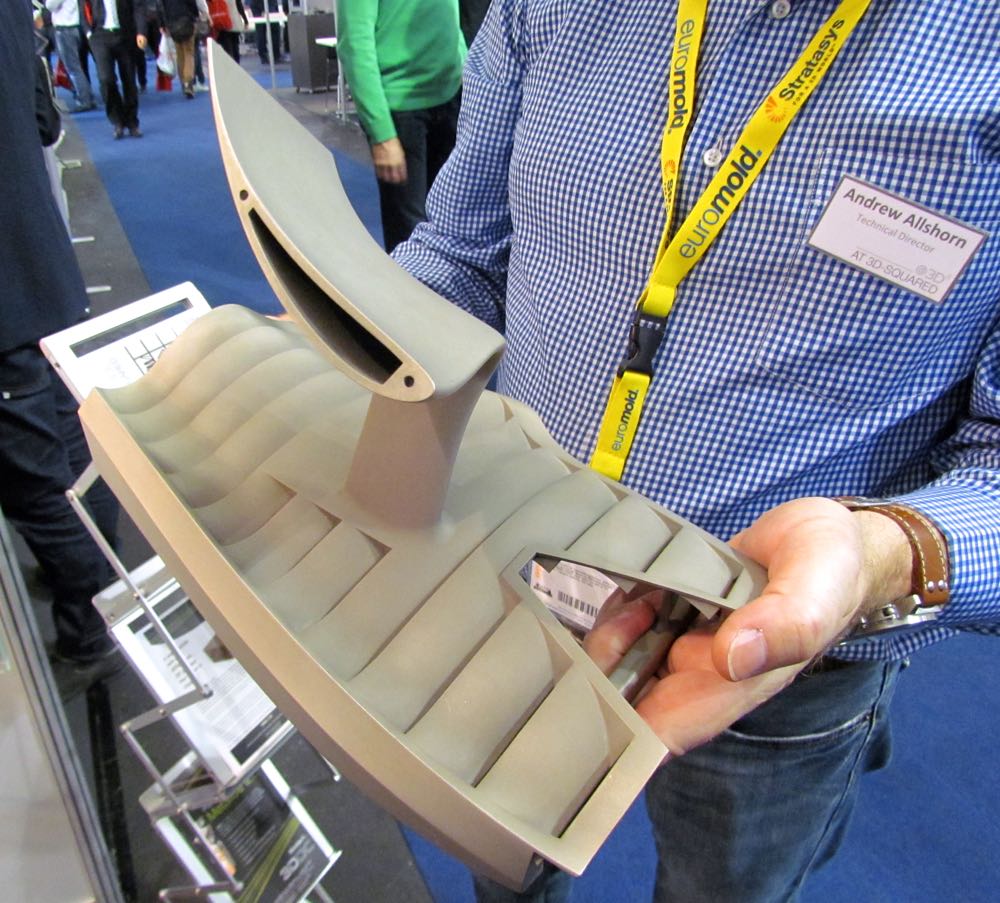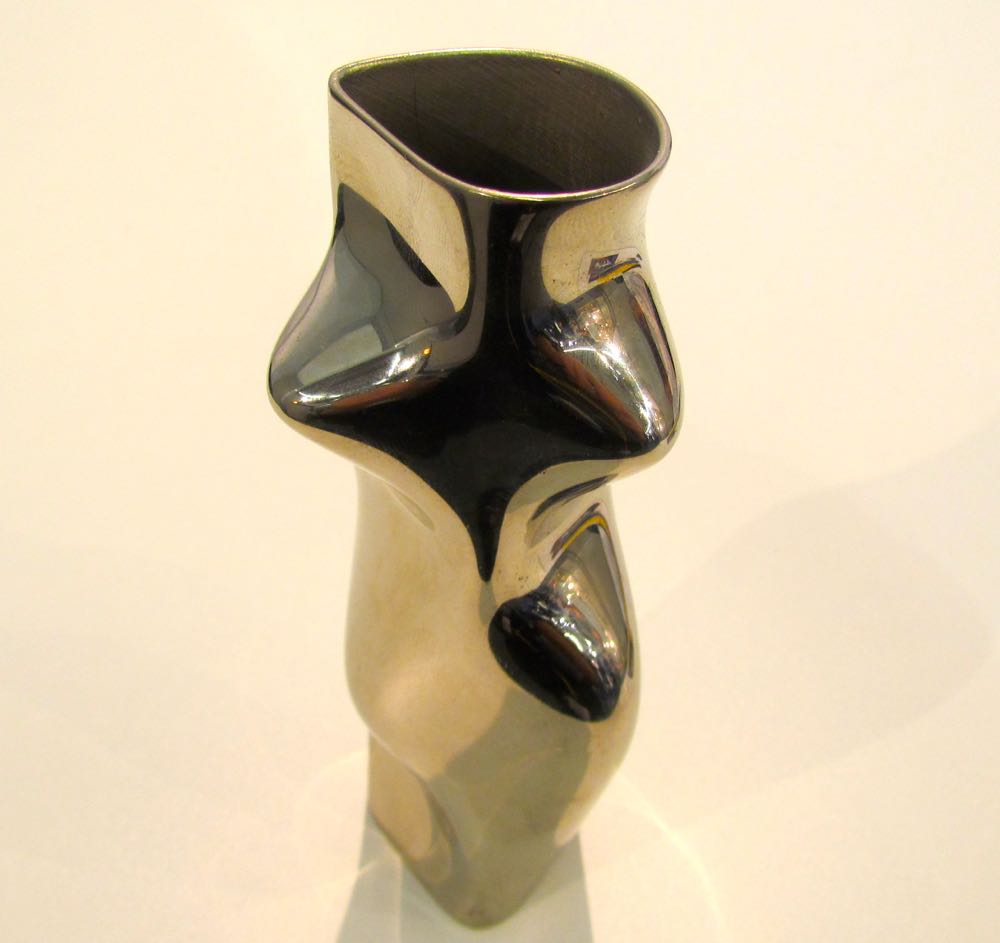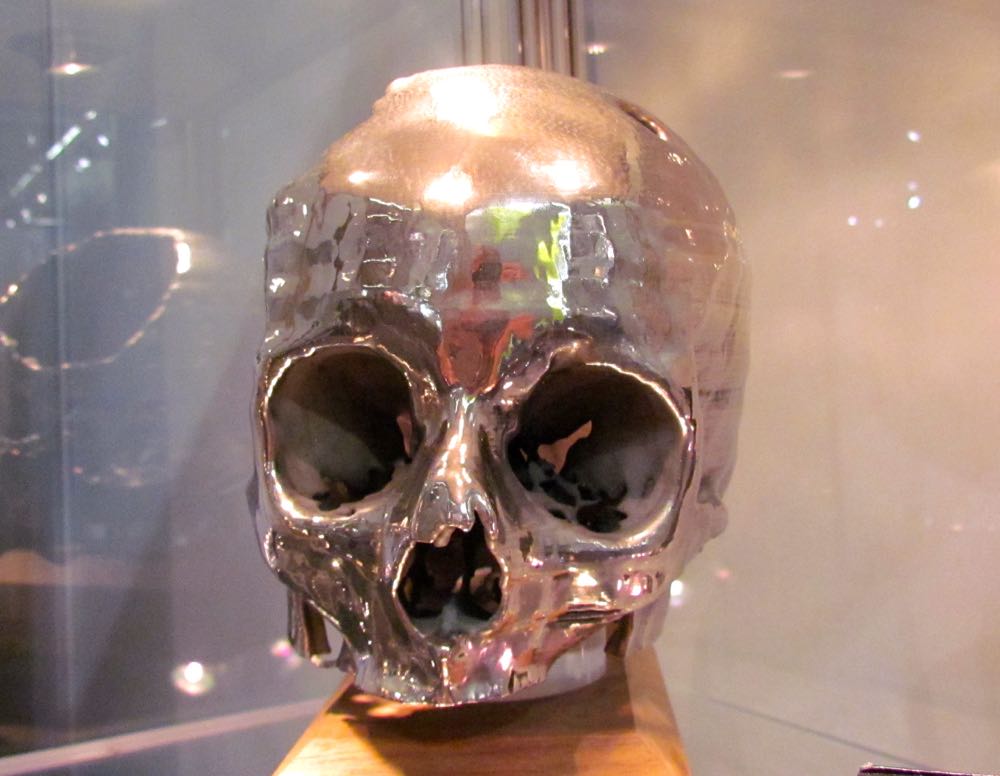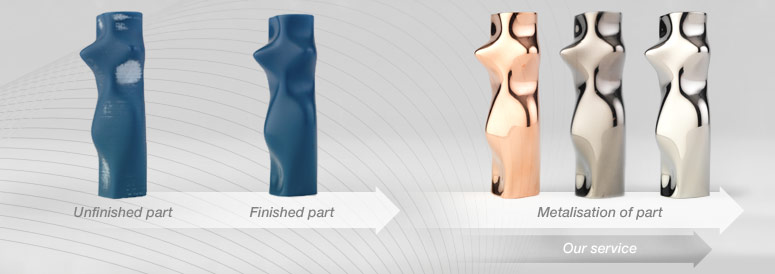3DDC’s “Metalise It” process could provide relatively strong parts for a lot less expense than printing in metal.
One of the most important properties of a 3D print is its strength. Unfortunately, many 3D printing processes produce great parts, but with limited strength. This constrains the use of some prints to controlled prototypes, artistic works or visual inspection.
One way around these limits is to simply print your part in metal instead of plastic. However, 3D printed metal parts are still quite expensive.
An alternative has been developed by 3DDC of the UK, who have created a variety of plating options for plastic parts.
The process involves finishing a plastic 3D printed part with a smooth surface, then plating it using 3DDC’s processes.
The results are obviously less strong than actual metal printed parts, but the plated parts are indeed quite a bit stronger than mere plastic. 3DDC’s statistics show significant improvements in mechanical properties, such as tensile strength, which can be improved from 200-500%. The process is able to plate with a wide variety of metals, including stainless steel, copper-nickel and even gold.
Development of the process has been challenging for 3DDC, who sought partners that were compatible with the plastic 3D prints. Some plating services, for example, would use heat sufficient to distort the underlying plastic part. These problems have been solved and 3DDC can reliably deliver plated parts, as witnessed by their numerous clients, including Aston Martin.
Aside from gaining stronger parts, there’s another interesting use for this tech: insurance! It’s possible to 3D print and plate jewelry objects that appear realistic and expensive, but in fact are largely made a cheap plastic.
Via 3DDC






